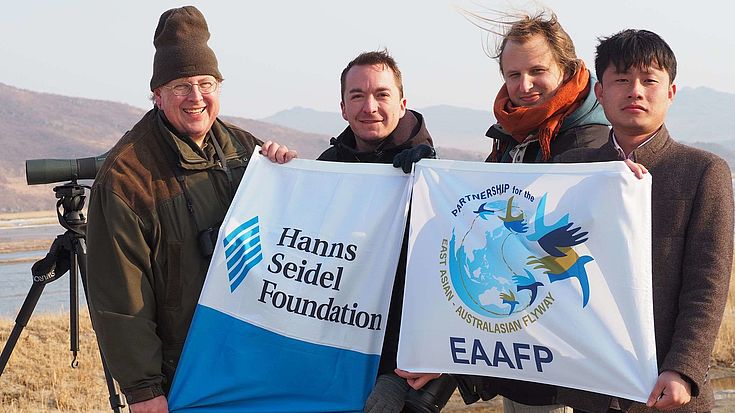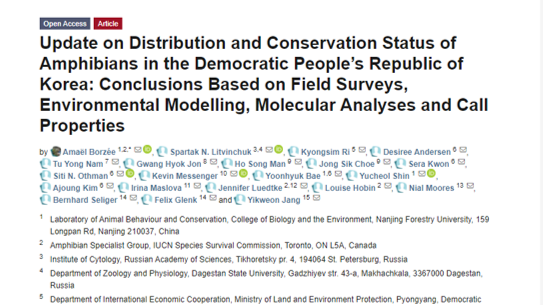Project News
Conservation and Wise Use of Wetlands in West/Yellow Sea

North Korea's first on-site survey and identification of 18 species of native amphibians such as Seoul Frogs
Eighteen amphibians classified as endangered species in South Korea, including Suweon Tree Frog and Seoul Frog (also known as Gold-spotted Pond Frog), were found in North Korea's first field survey. Preserving the amphibian population was relatively easier as North Korea was less affected by pesticide and mechanized agricultural methods. This found is significant in that it provided North Korea’s latest information on the distribution and evolution of amphibians in Northeast Asia. However, the number of amphibians in Pyongyang and Cheonseon is decreasing due to climate change and drought in North Korea. The overall process was supported by Hanns Seidel Foundation through the conservation and wise use of wetland in the DRP Korea project since 2015.
The Hankyoreh: “North Korea's first on-site survey and identification of 18 species of native amphibians such as Seoul Frogs” (Korean only)
The Hankyoreh: “Less pesticide, less mechanized...The North Korean rice paddies are a treasure trove of amphibians.” (Korean only)

Update on Distribution and Conservation Status of Amphibians in the Democratic People's Republic of Korea
Article “Update on Distribution and Conservation Status of Amphibians in the Democratic People's Republic of Korea: Conclusions Based on Field Surveys, Environmental Modeling, Molecular Analyses and Call Properties”, which Dr. Seliger and Felix Glenk project manager participated as a co-author, was published in MDPI. Various research institutions including Nanjing Forestry University, ICUN, and the Ministry of Land and Environment Protection of DPRK participated in this paper. Furthermore, this contains field and literature surveys, call recording, photographs, landscape models, and molecular tools to estimate the presence, range, and status of amphibians in DPR Korea.
You can find the full article here

South Korean Tidal Flats “Getbol” listed as UNESCO World Heritage
Last July 26th, South Korean tidal flats “Getbol”, or “Korean Tidal Flats” has been officially inscribed on the UNESCO World Heritage List. Four newly registered Getbols; Seocheon Getbol, Gochang Getbol, Sinan Getbol, and Boseong-Sunceon Getbol, are considered as a key supporting places for migratory birds in the East Asian-Australian Flyway. In addition, Getbol’s carbon storage capacity is now fully recognized for its value, especially at this time frame when aiming for carbon neutrality by 2050. President Moon Jae-In recently expressed gratitude to those involved in the process of protecting and calling for the tidal flats to be inscribed.
You can read the full article here
